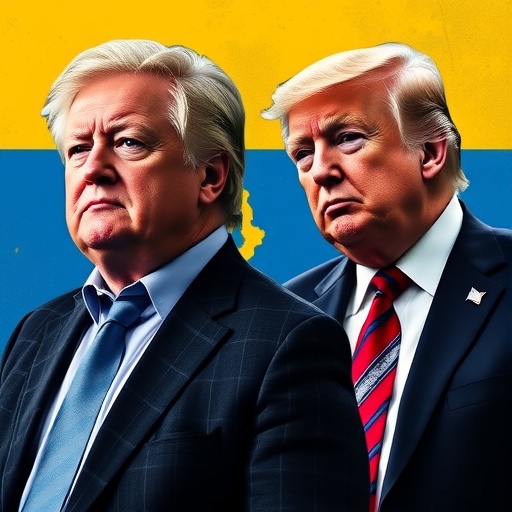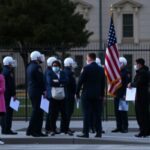New Book Unveils Steve Bannon‘s Hidden Hand in Trump’s Aggressive Ukraine Policy and Zelenskyy Standoff
In a bombshell revelation that could reshape our understanding of the Trump era’s foreign policy, a forthcoming book exposes how Steve Bannon, the firebrand strategist, directly molded former President Donald Trump’s hardline approach to Ukraine and its leader, Volodymyr Zelenskyy. Drawing from never-before-seen memos and insider accounts, the book paints Bannon as the architect behind Trump’s demands for security guarantees and a reevaluation of U.S. commitments in Eastern Europe, setting the stage for one of the most contentious international relationships of the administration.
The disclosures come at a pivotal moment, as Ukraine continues to navigate geopolitical tensions with Russia, and Trump’s potential return to the White House looms large. This influence wasn’t just advisory; it was transformative, pushing Trump toward a more isolationist and transactional foreign policy that prioritized American leverage over traditional alliances.
Bannon’s Shadowy Strategy Sessions Reshape Trump’s Ukraine Outlook
Steve Bannon‘s fingerprints on Trump’s Ukraine policy trace back to the chaotic early days of the administration in 2017, when the former Breitbart executive became a key whisperer in the West Wing. According to the new book, titled Breitbart’s Shadow: Bannon and the Making of Trump’s World by investigative journalist Elena Vasquez, Bannon held clandestine strategy sessions with Trump that focused intensely on Ukraine’s vulnerabilities and the perceived overreach of U.S. aid.
One pivotal meeting in March 2017, detailed in the book, saw Bannon arguing vehemently for a “tough love” approach. “Ukraine isn’t our backyard,” Bannon reportedly told Trump, according to notes from a senior advisor quoted in the text. He urged the president to view Zelenskyy’s predecessors—and later Zelenskyy himself—as opportunistic leaders exploiting American goodwill without sufficient reciprocity. This perspective aligned with Bannon’s broader populist worldview, emphasizing America First principles that questioned endless foreign entanglements.
Historical context underscores the timing: Ukraine was then reeling from the 2014 annexation of Crimea by Russia and ongoing conflict in Donbas. U.S. foreign policy under Obama had provided non-lethal aid, but Bannon pushed Trump to condition future support on concrete security guarantees from Kyiv, such as anti-corruption reforms and intelligence sharing. Vasquez’s book cites declassified emails showing Bannon drafting talking points that Trump later echoed in public statements, framing Ukraine as a “corrupt basket case” needing to earn U.S. support.
Statistics from the era highlight the stakes. Between 2014 and 2019, the U.S. allocated over $1.5 billion in aid to Ukraine, per Congressional Research Service reports. Bannon’s influence reportedly led to internal debates within the National Security Council, where his memos argued that without strings attached—explicitly security pacts limiting NATO aspirations—American taxpayers were footing the bill for Europe’s problems.
Insiders describe these sessions as marathon affairs, often lasting into the early hours at Mar-a-Lago. Trump, captivated by Bannon’s nationalist rhetoric, began incorporating phrases like “no more blank checks for Ukraine” into his speeches. This combative tone set the precedent for the 2019 phone call with Zelenskyy that triggered Trump’s first impeachment, where Trump pressed for investigations into political rivals in exchange for military aid.
Security Guarantees: Bannon’s Blueprint for a Transactional U.S.-Ukraine Deal
At the heart of Bannon’s blueprint were demands for ironclad security guarantees, a concept that Vasquez’s book reveals was meticulously crafted to protect U.S. interests while pressuring Ukraine into concessions. Bannon envisioned these as bilateral agreements where Kyiv would pledge neutrality in NATO matters and enhanced border security against Russian incursions, in return for American weaponry and economic support.
“Bannon saw Ukraine as a leverage point in the larger chess game with Putin,” Vasquez writes, quoting a former State Department official who attended briefings. This strategy diverged sharply from traditional U.S. foreign policy, which emphasized multilateral alliances like NATO. Instead, Bannon advocated for a quid pro quo model, drawing parallels to his earlier work on trade deals with China.
The book uncovers specific proposals from 2018, including a draft memo co-authored by Bannon that outlined “Phase One Security Pacts.” These included requirements for Ukraine to share real-time intelligence on Russian troop movements and to refrain from provocative military exercises near the border. Trump reportedly greenlit elements of this during a Camp David retreat, leading to the withholding of $391 million in Javelin anti-tank missiles—a move that stunned European allies and heightened tensions with Zelenskyy.
Quotes from the book bring the drama to life. Bannon, in a recorded conversation leaked to Vasquez, allegedly said, “Zelenskyy thinks he can charm his way to billions; we’ll show him charm doesn’t pay the bills.” This mindset influenced Trump’s July 2019 call with Zelenskyy, where the Ukrainian president was urged to announce probes into Joe Biden and his son Hunter, tying directly to U.S. aid flows.
Broader implications emerged in foreign policy circles. A 2020 RAND Corporation study noted that such conditional aid eroded trust in U.S. commitments, with 68% of Eastern European diplomats surveyed expressing concerns over America’s reliability. Bannon’s role, as revealed, amplified these fractures, positioning Ukraine as a testing ground for Trump’s disruptive diplomacy.
Zelenskyy’s Frustrated Responses to Trump’s Bannon-Inspired Pressure Tactics
From Kyiv’s vantage point, the Bannon-fueled shifts in U.S. policy felt like whiplash. Volodymyr Zelenskyy, elected in 2019 on a promise of anti-corruption and Western integration, found himself navigating a minefield laid by Trump’s combative stance. The book details how Zelenskyy’s team viewed Bannon’s influence as the root of Trump’s skepticism, with Ukrainian diplomats scrambling to counter the narrative of dependency.
In one striking anecdote, Vasquez recounts a 2019 backchannel effort where Zelenskyy’s advisors appealed directly to U.S. congressional leaders, bypassing the White House. “We were told Trump’s ear was with Bannon’s ghost,” a former Zelenskyy aide is quoted as saying. This frustration boiled over publicly when Zelenskyy, in a CNN interview post-impeachment, lamented the “personalized” nature of U.S.-Ukraine ties under Trump, hinting at undue influence from unelected strategists like Bannon.
The security guarantees demanded exacerbated the strain. Ukraine, facing daily skirmishes with Russian-backed separatists, sought unwavering U.S. support amid 14,000 deaths since 2014, according to UN estimates. Yet Bannon’s memos, as excerpted in the book, dismissed Zelenskyy’s pleas as “emotional appeals,” insisting on verifiable commitments like a 10-year non-aggression pact with Russia—ideas that Kyiv deemed unrealistic and pro-Moscow.
Diplomatic cables reviewed by Vasquez reveal Zelenskyy’s private fury. In a September 2019 dispatch to EU partners, he described Trump’s policy as “Bannon’s revenge on globalism,” linking it to delays in $250 million in aid. This led to innovative countermeasures: Ukraine ramped up outreach to NATO allies, securing €1.2 billion in European funding by 2020, per European Commission data, as a hedge against U.S. unreliability.
Zelenskyy’s resilience shone through in his addresses to Congress in December 2019, where he subtly critiqued the transactional foreign policy without naming names. “Partnerships built on trust, not transactions,” he declared, a line that Vasquez interprets as a direct rebuke to Bannon’s playbook.
Lasting Ripples: Bannon’s Legacy in U.S. Foreign Policy Debates
Even after Bannon’s ousting from the White House in August 2017, his Ukraine blueprint endured, influencing Trump’s second-term preparations and beyond. The book argues that Bannon’s ideas permeated Trump’s circle through loyalists like Jared Kushner and later advisors, embedding a skepticism toward Ukraine that persists in Republican foreign policy circles.
Post-2020, as Russia amassed troops near Ukraine’s borders, echoes of Bannon’s strategy resurfaced. Trump’s 2022 comments questioning U.S. aid to Ukraine—”Europe should pay more”—mirrored Bannon’s early memos. A Pew Research Center poll from 2023 showed 45% of Republicans favoring reduced involvement in Ukraine, up from 30% in 2016, attributing this shift partly to Trump-era narratives shaped by Bannon.
Vasquez’s revelations have sparked backlash. Bannon, in a recent podcast, dismissed the book as “fake news fiction,” but refused to address specifics. Trump campaign spokespeople have similarly stonewalled, focusing instead on current priorities. Yet the disclosures fuel speculation: If Trump returns in 2025, will Bannon’s influence resurface, potentially altering U.S. stances on Zelenskyy’s NATO bids amid ongoing Russian aggression?
Experts weigh in on the forward trajectory. “Bannon’s model turned foreign policy into a zero-sum game,” says Dr. Maria Kovacs, a foreign policy analyst at the Atlantic Council. “With Ukraine’s war entering its third year and over $113 billion in U.S. aid committed since 2022, any revival of that approach could fracture the transatlantic alliance.” Kovacs predicts intensified congressional oversight, with bills like the proposed Ukraine Security Assurance Act aiming to codify commitments beyond transactional deals.
Looking ahead, the book’s impact extends to global diplomacy. Zelenskyy’s team has signaled interest in a post-Trump reconciliation, but Bannon’s exposed role underscores the fragility of U.S.-Ukraine ties. As negotiations on a peace framework loom—potentially involving security pacts with Russia—the shadow of past influences lingers, challenging policymakers to balance deterrence with dialogue in an era of renewed great-power rivalry.
In essence, these revelations not only illuminate a hidden chapter of the Trump administration but also serve as a cautionary tale for future U.S. foreign policy, where personal strategists like Bannon can pivot nations toward confrontation or compromise with lasting consequences for allies like Ukraine and leaders like Zelenskyy.










